Environment
COP21: Climate change in figures
Hot air rises…
The average global temperature could rise by 3-6 degrees Celsius by 2100 without urgent action. To limit the rise to 2 degrees Celsius, we need zero net greenhouse gas emissions by the end of the century. Emissions would need to peak before 2030 to give us a fighting chance of achieving this.
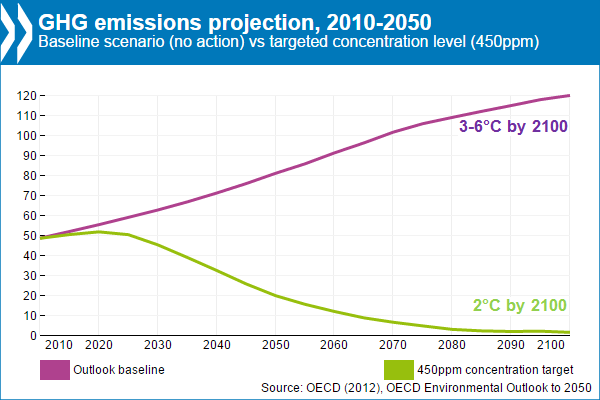
Download the underlying data on GHG emissions projection
Unsuccessful… or just unwilling?
Over 1990-2010, Europe was the only continent in which aggregate GHG emissions fell. This trend of rising global emissions makes an agreement at the Paris Climate Change Conference all the more important. However, the 150+ Intended Nationally Determined Contributions (INDCs) that have been submitted to the UN Framework Convention on Climate Change are not enough to limit the Earth’s average temperature rise to 2 degrees Celsius. What’s more, many countries are currently on a path that will leave them short of meeting their commitments.
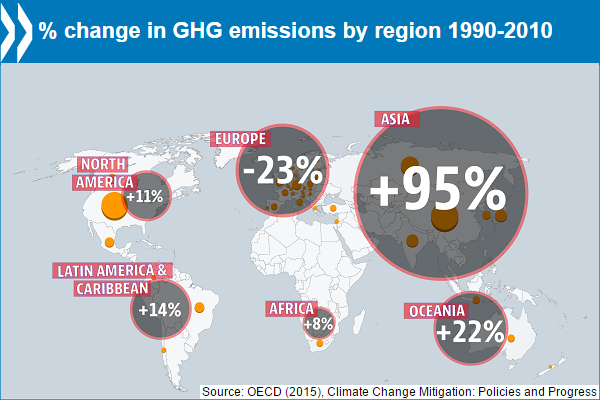
See how your country compares in GHG emissions
Emissions from BRIICS stacking up
Emissions from the BRIICS (Brazil, Russia, India, Indonesia, China, South Africa) are expected to account for most of the global increase over the next three decades, driven mainly by population growth and increasing GDP per capita. Although the share of emissions coming from OECD countries is expected to drop (down to 23%), they are expected to continue to have the highest level of emissions per capita.
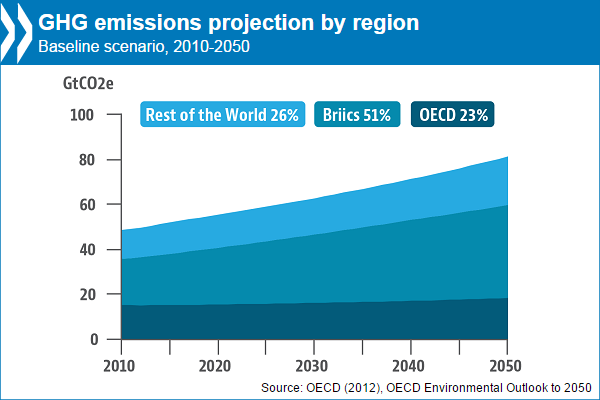
Download the underlying data on GHG emissions projection by region
It all comes down to energy
Energy is the largest source of global emissions at above 60%. Energy-related emissions are expected to grow by 78% by 2050 from 2005 levels if no further action is taken, as coal and natural gas are often used in meeting demand for energy. The share of transport in global emissions is set to double to 40% by 2035, as the demand for cars is expected to increase, particularly in developing countries.
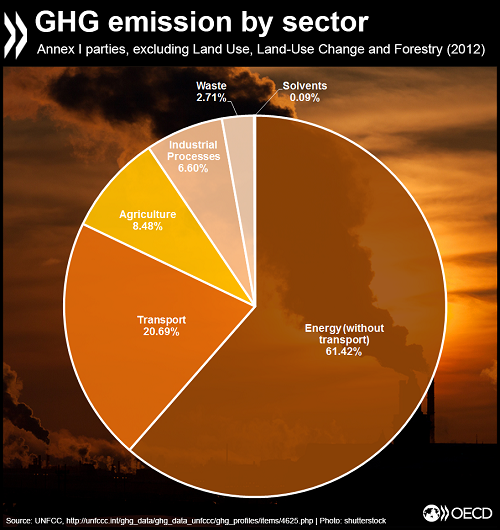
Download the underlying data on GHG emissions by sector
Renewables renewing hope
Since 1990, renewable energy sources have grown more quickly than total primary energy supply (TPES), at an average annual rate of 2.2%, versus 1.9% for TPES. The uptake in low-carbon energy sources is helping economies to grow without increasing emissions.
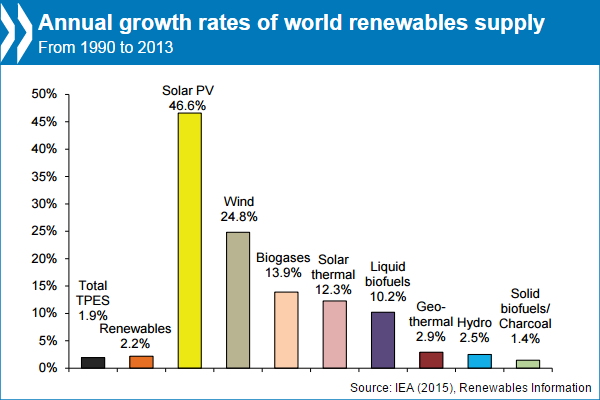
Data extracted from IEA, Renewables Information 2015
But two decades after the Kyoto Protocol, the global energy mix has not changed. Fossil fuels still make up 81% of the energy supply and renewable energy only accounts for 13.5%. We need to act much faster.
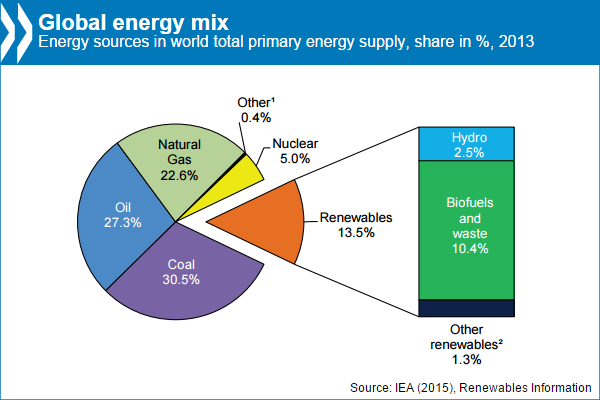
Data extracted from IEA, Renewables Information 2015
Further information:- Read more statistics story on COP21: Consequences of inaction and Climate change mitigation- OECD at #COP21- For more data on environment and energy, go to: http://data.oecd.org |
Video: Meeting climate goals will require stronger policies to cut emissions |
Related Documents
